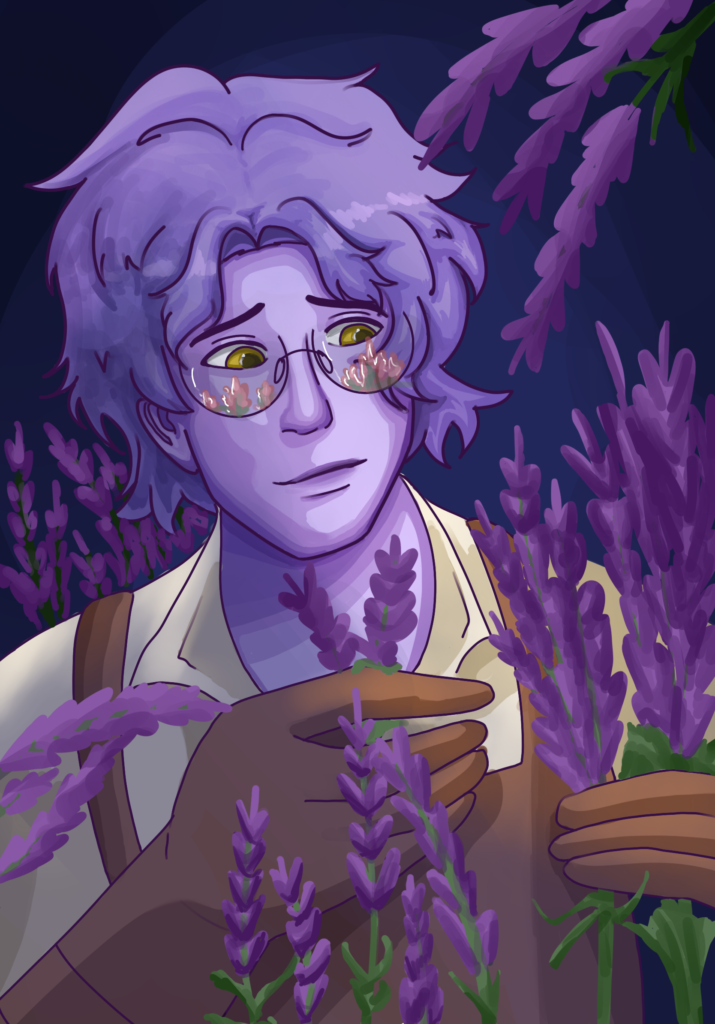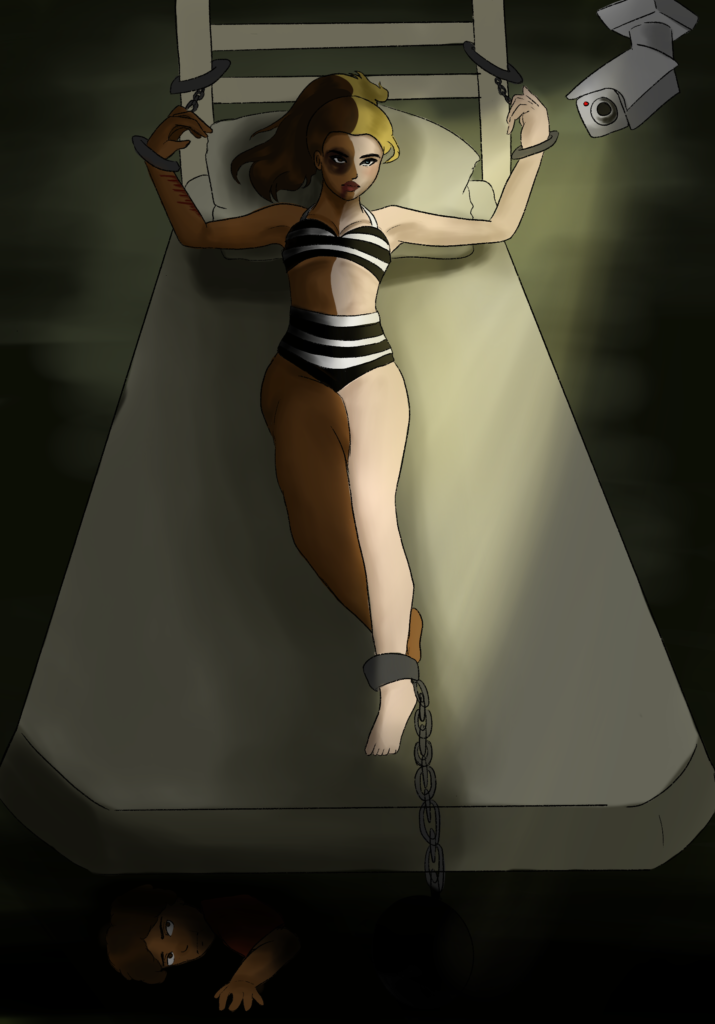Illustrations By Marianne Corpuz
Edited by Kaylie Harley & Daniel Perez Pichardo
The Fool

This piece was created by utilizing an original character of mine, Abraham, in my interpretation of the major arcana – “The Fool” – in tarot cards . The artist admires the beauty of lavender flowers at a close proximity. The red reflection of the lavender through his glasses displays his misinterpretation of their true colors, and reveals his colorblindness. Despite this, he still understands nature’s beauty, regardless of his direct misinterpretation of the truth. The glance Abraham takes at his surroundings serves as a glimpse of his journey with color and the beauty around him, presented through his awed expression. The character’s amber eyes and the red flowers’ reflection have warm hues that directly contrast the cool purple tones between the background and character itself. It symbolizes a yearning for a deeper emotion and understanding beyond the beauty at surface level. As for the tarot-themed title of “The Fool,” the artist’s questioning of perspective is a show of how little he knows about the world around him, yet how naively he decides to revel in its magnificence regardless.
This illustration is a display of how color blindness is not always an inhibitor of perception, but rather an alternative lens. Abraham does not have the ability to see the color of a flower, but it does not mean that his view of the flower is wrong, nor does his monochromatic view hinder any of the lavenders’ beauty. Instead, the point of view the artist has of his surroundings is what makes grasping perspective from multiple angles an important feat. Beyond the visual dimension of color, there is a deeper dimension of allure that Abraham is able to digest. The artist directly approaches the flowers with a naive attitude filled with innocence — main characteristics of the major arcana, “The Fool.” For the colorblind man, the world of color is merely an unknown — but beautiful – journey he has yet to explore. With a wonder-filled expression, Abraham showcases how his curiosity of the colorful world around him is enhanced through his passion for art with optimistic admiration. Despite what most people may believe to be a hindrance to his craft, to the artist, it is simply a unique experience.
“Restraints and Perspective Constraints: A Commentary on the Misrepresentation of Incarcerated Women in the Media”

In this illustration, a woman lies handcuffed on a prison bed in a dark room, divided into two separate lives on the same body. A security camera pans across the woman on the side in which she has blonde hair and Euro-centric features. The side in the shadows resembles a woman of color, covered in bruises and scars. A child is visible hiding under her side of the bed.
Perspective is an important factor when it comes to media portrayal — whether in movies, shows, or documentaries — especially for incarcerated women. The security camera and where the light reflects on the woman represent how media coverage of imprisoned women is often targeted towards the male gaze. The “ideal” female prisoner, according to most movies, is one that is visibly desirable, as seen through the provocative prison clothing the figure is wearing. For the past few decades, a disproportionate amount of white women have been the media’s face for prisoners in America, largely due to the societally-male perspective that is often catered towards in the entertainment industry. Although the vast majority of incarcerated women are women of color, a narrative has been created that white women are more likely to be sympathized with, and women of color in fact “deserve” the punishment they are receiving. As for the experiences these marginalized women endure while in prison, the outside perspective of the viewer has very little information, and this illustration is made to bring them to light. While the woman in the camera’s view is mostly unharmed, the shadowed side displays the reality of female prison life. The cuts on her left wrist represent the decline of their mental health, and the self-harm often committed in response. The conditions these women go through in prisons are inhumane, and not enough resources are being provided for these incarcerated individuals. Mental health is a subject that is also often overlooked for these women, and not taken seriously enough, which is why its representations in my piece are depicted in the shadows. The bruises come from being victims of violence within the prison system — whether from other prisoners or mistreatment from prison guards. As this problem is very hierarchical, people of power often suppress any sort of coverage of any incident of it happening, especially since most prison systems emphasize an image of good behavior. The child under the bed also adds commentary on how poorly represented incarcerated mothers are in the media. A multitude of horror stories come out of these penitentiaries with mothers carrying babies to term in prison while guards and other people of power ignore the mothers cries. Some even have to deliver their babies themselves. Other times, the mother rarely gets any time to bond with their child while they’re in prison, and often grow up without being in the picture. This illustration is meant to bring to light the reality of their struggles and spread awareness in the hopes of improving such unlivable conditions.